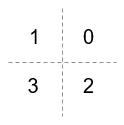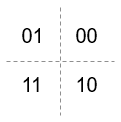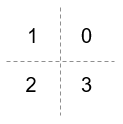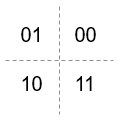comm.QPSKModulator
(To be removed) Modulate using QPSK method
comm.QPSKModulator will be removed in a future release. Use pskmod instead. For information on updating your code, see Version History.
Description
The comm.QPSKModulator object modulates a signal using the quadrature phase
shift keying (QPSK) method. The output is a baseband representation of the modulated
signal.
To modulate using the QPSK method:
Create the
comm.QPSKModulatorobject and set its properties.Call the object with arguments, as if it were a function.
To learn more about how System objects work, see What Are System Objects?
Creation
Syntax
Description
qpskmod = comm.QPSKModulator creates a System object™ to modulate input signals using the QPSK method.
qpskmod = comm.QPSKModulator(
sets properties using one or more name-value arguments. For example,
Name,Value)'OutputDataType'='single' specifies output of the modulated signal
values in single precision data type.
qpskmod = comm.QPSKModulator(phase,
sets the Name,Value)PhaseOffset property to
phase and optional name-value arguments. Specify
phase in radians.
Properties
Usage
Syntax
Input Arguments
Output Arguments
Object Functions
To use an object function, specify the
System object as the first input argument. For
example, to release system resources of a System object named obj, use
this syntax:
release(obj)



